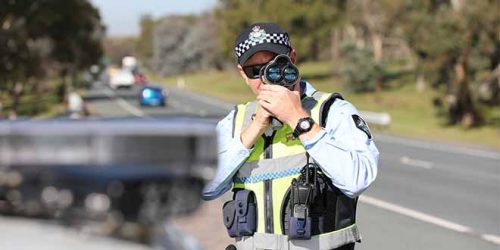
Chronic wounds are the hidden pandemic in our community, says podiatrist ALLAN DONNELLY, disabling the economy and lives of the people and carers who look after them.
CHRONIC wounds affect nearly half a million Australians at any one time. That is well beyond the population of the ACT, but they rarely rate a mention outside wound clinics (all too few) and conferences.

They are hardly the subject of social conversations and pictures of them are not pretty. Yet they are with us in the community every day in the shopping centres, cafes and places of work but because of their nature, are hidden from view under bandages and clothing.
They are truly the hidden pandemic in our community, disabling both the economy and lives of the people and carers who look after them. What you can’t see, you don’t know.
Each year, Wounds Australia, the peak body for chronic wound prevention and management, uses Wound Awareness Week (August 14-20) to highlight the enormous burden chronic wounds cause in our community.
The burden is both financial and emotional. Treating chronic wounds is a specialised field that uses lots of skills and resources that are expensive and time consuming. By their nature, chronic wounds are long lasting and difficult to resolve so they have a deeply depressive side as well.
To add insult to injury they often have a strong odour which prevents people from participating in work or any social outing.
The figures and impacts speak for themselves and are seriously alarming. Each year more than 420,000 Australians suffer from a chronic wound and more than $3 billion (yes that is a “b” for billion) of the nation’s aged care and healthcare budgets is spent on chronic wounds. Each chronic wounds patient spends more than $4000 on out-of-pocket costs and, with most patients over 65, this places unbearable pressure on pensioners and retirees.
If you think a wound looks bad even with good care, wait till you see what happens when someone can’t manage the out-of-pocket costs and no, there are currently no subsidies under Medicare for wound products. Patients are prevented from working, studying, exercising and doing simple daily tasks everyone else takes for granted. In addition, wound patients are also likely to suffer from social stigma that can lead to serious mental health issues.
My specialty is diabetic foot wounds. Not everyone’s cup of tea, but I love my work. Again, the figures are alarming; 85 Australians lose a toe, foot or leg every week to diabetic foot wounds and 27 die each week from diabetic foot wounds.
The theme for this year’s Wound Awareness Week is “The Solution is Bleeding Obvious”. This includes raising awareness, developing educational programs for carers and health workers, creating and funding wound-care centres with trained staff and subsidising wound-care products and management through Medicare.
Yes, these solutions will be expensive but not doing anything is already costing us more than $3 billion each year and that does not include the emotional cost.
What does this mean for the ACT and surrounding region?
The ACT Branch of Wounds Australia is made up of local clinicians who have a special interest and involvement in wound management. All are volunteers and provide two educational events for other health professionals each year as well as their day-to-day involvement in wound care.
They are supported by colleagues with excellent wound care skills and knowledge such as the High Risk Foot Service and local community nurses.
However, once you move away from the epicentre of the ACT and further into regional NSW, such as Queanbeyan, your options for skilled wound care and resources become much more limited.
There is not a single hospital-based High Risk Foot Service in the entire Eden-Monaro electorate meaning that anyone in that electorate has to travel to the ACT.
Your local Wounds Australia ACT Branch committee members and their colleagues work with wound patients every day. We know just how difficult, frustrating and depressive the whole exercise can be for both the patient and us.
We have a little saying in wound care: “treat the whole person, not just the hole in the person”. Wound Awareness Week and the message we bring with it is an important step in changing how we can improve wound management in the Australian community.
Allan Donnelly is deputy chair of Wounds Australia, ACT Branch.
Who can be trusted?
In a world of spin and confusion, there’s never been a more important time to support independent journalism in Canberra.
If you trust our work online and want to enforce the power of independent voices, I invite you to make a small contribution.
Every dollar of support is invested back into our journalism to help keep citynews.com.au strong and free.
Thank you,
Ian Meikle, editor





Leave a Reply